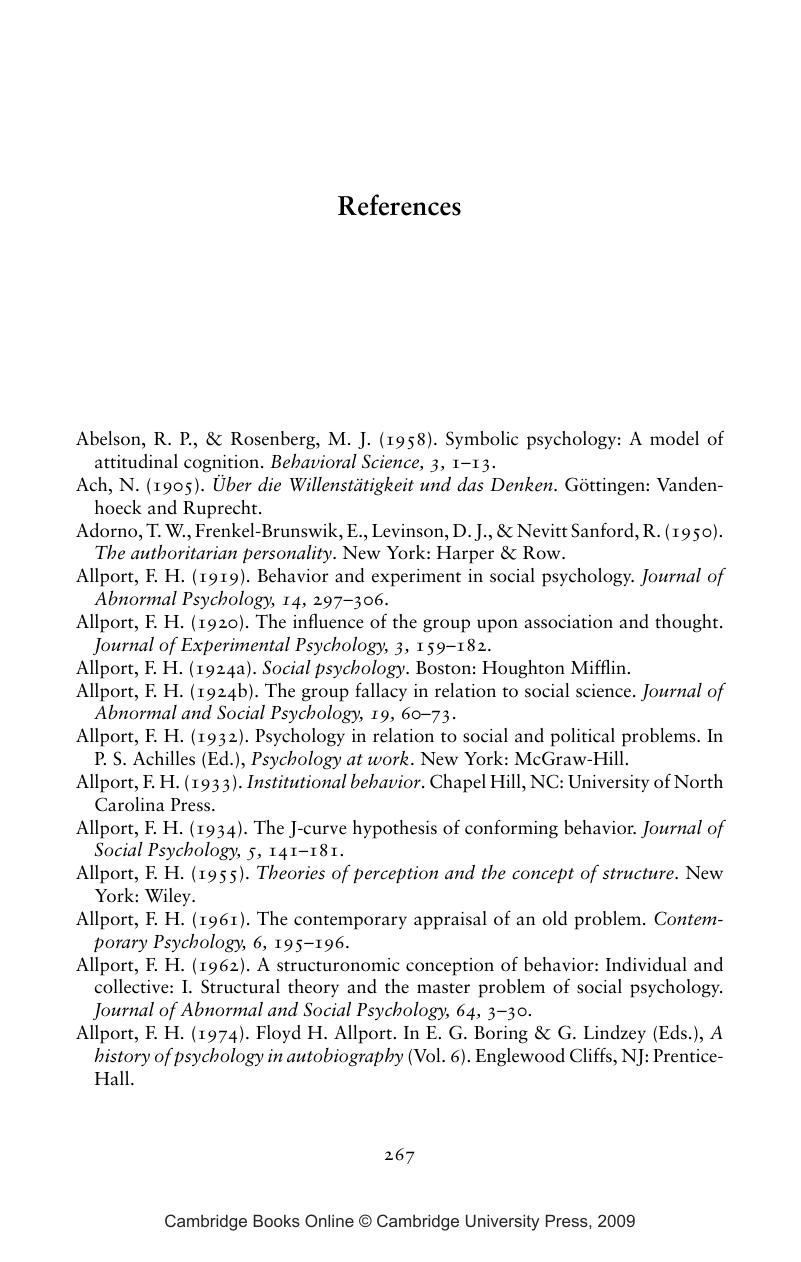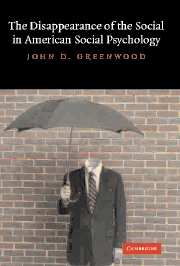Book contents
- Frontmatter
- Contents
- Preface
- Introduction: What Happened to the “Social” in Social Psychology?
- 1 The Lost World
- 2 Wundt and Völkerpsychologie
- 3 Durkheim and Social Facts
- 4 The Social and the Psychological
- 5 Social Psychology and the “Social Mind”
- 6 Individualism and the Social
- 7 Crowds, Publics, and Experimental Social Psychology
- 8 Crossroads
- 9 Crisis
- 10 The Rediscovery of the Social?
- References
- Index
- References
References
Published online by Cambridge University Press: 18 December 2009
- Frontmatter
- Contents
- Preface
- Introduction: What Happened to the “Social” in Social Psychology?
- 1 The Lost World
- 2 Wundt and Völkerpsychologie
- 3 Durkheim and Social Facts
- 4 The Social and the Psychological
- 5 Social Psychology and the “Social Mind”
- 6 Individualism and the Social
- 7 Crowds, Publics, and Experimental Social Psychology
- 8 Crossroads
- 9 Crisis
- 10 The Rediscovery of the Social?
- References
- Index
- References
Summary

- Type
- Chapter
- Information
- The Disappearance of the Social in American Social Psychology , pp. 267 - 302Publisher: Cambridge University PressPrint publication year: 2003



